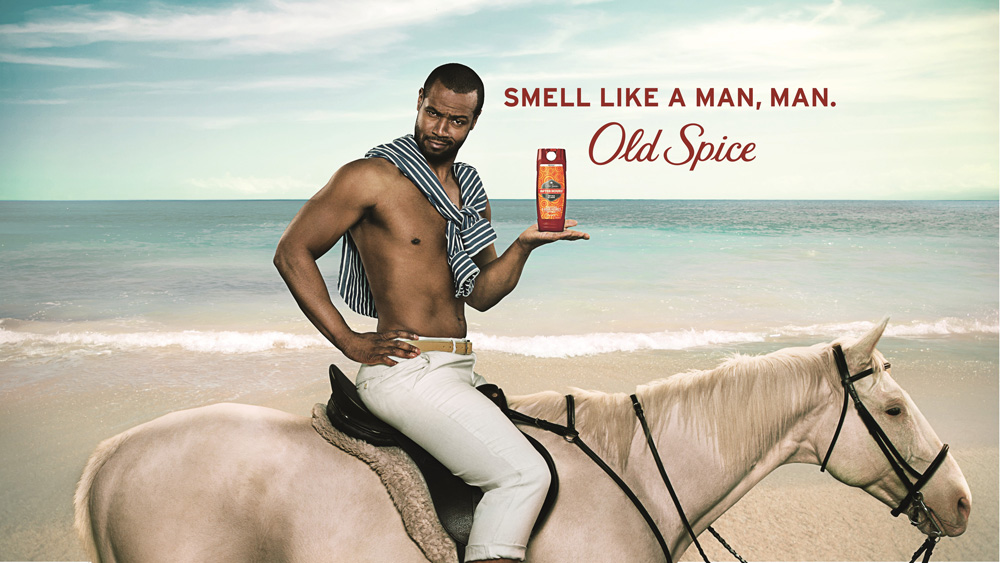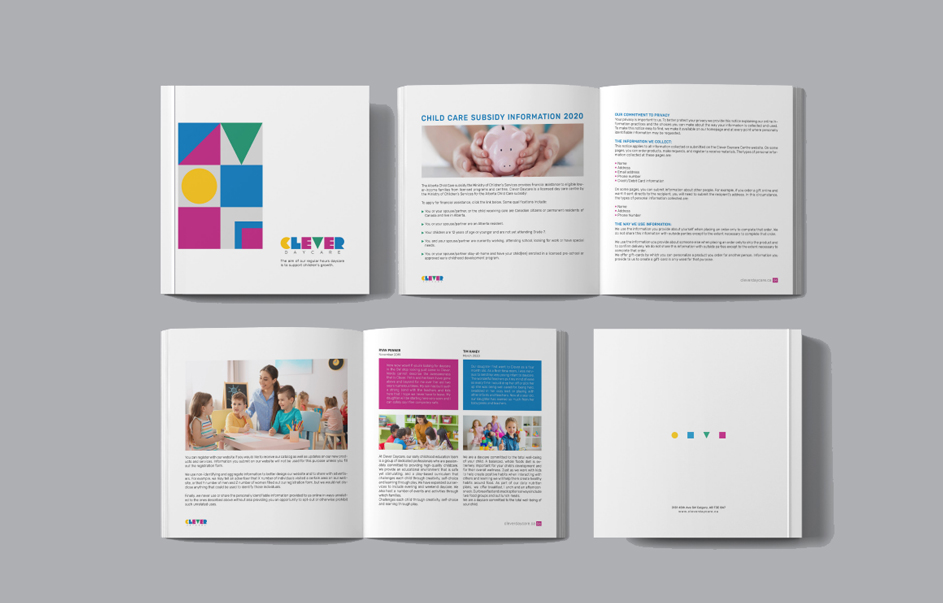
We always strive to be unique and independent. It’s a virtue to make our own decisions, give our own opinions, and be our own selves. Brands are the same way! Every brand is like a person, and like a person, it has its own looks, behaviors, and language. In branding, the looks are the visuals, the behaviors are the actions, and the language is the brand voice.
Simply put, the brand voice is how your brand’s unique personality comes through in its communications. It’s not just what you say; it’s also the way you say it. Your brand voice is one of the essential distinctive elements that make your brand stand out in a connected, competitive world.
In this article, we’ll cover the basics of this concept, and guide you through crafting a brand voice your audience will just love.
Let’s dive right in!
Understanding Brand Voice & Tone
It’s important to have a good grasp of the subject before going into the specifics, so let’s go over the definitions, nuances, and why brand voice is important at all.
Definition of Brand Voice
As mentioned, brand voice is how a brand comes across through communications. This voice includes:
- Your choice of words.
- Communication style.
- Emotional tones across channels.
A brand voice seeps through everywhere, from your website to online support responses.
As Alina Wheeler says:
“The best brands speak with one distinctive voice. On the web, in a tweet, in a sales pitch, in a speech given by the president, the company needs to project the same unified message.”
The Importance of Brand Voice
Your brand’s visual identity is often the first attribute noticed, but the brand’s voice is one of the earliest elements that influence customer perception through content, ads, and interactions.
If you have a distinctive, relatable voice, you’re halfway there in securing that customer’s trust!
Here’s a recap of everything we’ve hinted at so far.
A great brand voice:
- Differentiates you from a humdrum brand,
- Communicates your unique personality,
- Appeals to your niche audience, and
- Gives your audience a sense of trust and consistency.
Brand Voice vs. Tone
You might sometimes hear people use brand “tone” and “voice” interchangeably. Remember that while these two concepts are close, they’re not the same.
To demonstrate, let’s use an example. Do you talk the same way to your boss and a 3-year-old? Probably not! This doesn’t mean you don’t have your distinctive voice; it just means that you take different tones with different contexts and interlocutors. In the office, with your boss, it’s “that’s true.” At a friend’s home, with a 3-year-old, it’s “you’re so smart!”

Brand voice remains the same, but brand tone adapts to context.
Brand voice is the general guidelines and brand tone is the specific usage. You might use a lot of puns and funny reels on Instagram, but it’s not wise to use that same tone with a disgruntled customer! In that CS chatroom, your voice remains friendly, but your tone changes to something more respectful.
Example of Brand Voice Guideline
To develop a brand voice guideline, we should first establish the brand’s archetype and personality. This will help us define the brand voice and identify the different tones to use.
For example, if a brand’s archetype is determined to be a caregiver and its personality is characterized by competence, we can summarize the brand voice in three simple words, as shown in the table.

You can describe the meaning of brand voice attributes, using examples from movies, well-known characters, and other brands.
According to the target audience groups, each one needs a tone of voice. For instance, if one of the target groups is parents, we can describe the tone of voice with a diagram like the one shown below.

In addition to these diagrams and tables, we should provide explanations using examples in various formats and contexts, delineating clear dos and don’ts.
Now, let’s look at three major factors that affect brand voice usefulness.
What are the 3 C’s of Brand Voice?
Who doesn’t love mnemonic devices? Here’s a device for you. A brand voice should follow these 3 C’s to be effective which are character, clarity, and Consistency.
1. Character
We cannot stress this one enough. Make sure your brand’s character and voice align from the get-go.
It might sound obvious, but our experience suggests that a brainstorming session might just get carried away and settle for a voice that doesn’t fit the essence of your brand or business.
For example, a children’s daycare simply cannot have a serious, corporate brand voice and tone. Similarly, a financial institution cannot joke and take everyone’s investments lightly.
So, first, get crystal clear on the brand’s character, then keep it in mind while you look for the voice.
2. Clarity
We’ll get to different brand voice types in a bit, but remember that no brand voice is vague, obscure, or redundant! It’s important to always be straightforward and clear, regardless of your brand’s personality and the voice type you opt for.
Your ruler to decide what is vague and what is not is your audience’s understanding. If you’re not 100% sure that your audience will get it, don’t use it.
This is true of jokes, too. As a general rule of thumb, keep your setups short and make sure your audience understands them. A punchline is useless otherwise!
3. Consistency
Our last C here says that once you create your brand voice, stick to it across all platforms and touchpoints.
Your brand voice should be consistently recognizable across all touchpoints, such as websites, ads, and social media. However, the tone of this voice can shift depending on the context and audience of the channel (e.g., a friendly tone on social media vs. a professional tone in support tickets).
Does that mean you should sound identical everywhere? Not at all. Refer back to when we described the difference between brand voice and tone. You can take reasonably different tones in different contexts, but it should all feel like it’s coming from a composed character underneath.
Here’s how to know if you’re consistent: go to various channels and touchpoints and read excerpts from each at random and out loud. Do all excerpts seem like a single person has said them?
Types of Brand Voice + Examples
There are as many voices as there are characters. Every brand has a unique mix of qualities for a personality and voice if you follow the 3 C’s above.
That said, here are four common brand voice types and examples to get you thinking:
Brand Voice Type: Professional & Authoritative
Think of a professor or a medical professional giving you a diagnosis. This is the voice of knowledge in a formal setting. Brands with this voice primarily need an audience’s trust to be successful. Would you go to a doctor if you weren’t confident in their skills?
Forbes, Mayo Clinic, and The Wall Street Journal are prime examples of brands with a professional voice.
Case in Point: The Wall Street Journal
The WSJ is a world-renowned financial publication. Millions read them every day, looking for facts and analyses. If you’ve ever read through the Wall Street Journal, you would know that they’re always serious and confident.

Brand Voice Type: Friendly & Conversational
Think of a friend or an approachable coworker. This is the voice to go for if you want to create a relatively intimate bond with the audience. It is best used in retail or other businesses where customer retention is key.
Examples of brands with this voice include Coca-Cola, Telegram, and Mozilla.
Case in Point: Mozilla
Mozilla is a nonprofit in a fierce battle for a better internet, so they care a lot about connecting to every user. Take a look at their current website header and how they aim for simplicity and humanity:

Mozilla is also a great case study for how a brand can change tones based on context. Subscribe to their newsletter, and you will hear them tackle big problems in a catchy, humorous way.
They may make you laugh from time to time, but that largely depends on their context and tone. Read on for a humorous voice!
Brand Voice Type: Witty & Humorous
Think of your fun friend or cousin. Brands with a witty, humorous voice mainly aim to entertain and engage. You will see this voice a lot in food chains or businesses targeting younger demographics. This voice is why the ad battles between food chains are always funny!
McDonald’s, Burger King, Netflix, and Old Spice are famous examples of brands with humorous voices.
Case in Point: Old Spice
Old Spice is a brand for men’s grooming products and a king of zany humor. They’re confident, absurd, and never too serious.

Brand Voice Type: Inspirational & Motivational
Think of an inspiring leader or TED speaker. This type of brand voice aims to inspire, uplift, and energize. Most brands with this tone are in fitness, lifestyle, or personal development.
Prime examples here include Nike, Red Bull, and TED.
Case in Point: TED
TED’s tagline says how inspiring and optimistic the brand is: “Ideas Change Everything.” They currently don’t even have a header for their website’s homepage; they go straight to the thousands of speakers who are passionate about sharing their ideas with the world and changing everything.
How to Create a Brand Voice
Now that you know the basics, you can create your own brand voice! We have it broken down into four steps.
Step 1: Double Down on Your Brand Personality
If you know your brand by heart, you will instinctively have an idea of what voice it will have. So, the first step is to get clear on your brand’s character (if you aren’t already) and keep it in mind. Gather your team and make a list of your brand’s core characteristics.
Many or all items on the list should also be the characteristics of your brand’s voice and tone. The key here is to find those fine lines between primary and secondary characteristics. For example, is your brand meant to be funny first or friendly first? Is your mission to give facts or trustworthy ideas?
Step 2: Know Your Target Audience
It’s crucial to understand that, in the end, you’re doing everything to get your audience’s attention and support. So, always tailor your voice to something your audience will understand and relate to. For example, Microsoft currently describes their Microsoft Word like this:
“Make your words shine with smart writing assistance, helpful document designs, and easy collaboration tools anywhere, anytime.”
As a tech company, Microsoft could have simply said “a proprietary word processing software,” but many audience members wouldn’t relate to that.
So, consider your audience’s demographics, interests, and communication styles. If you’re not sure they would understand and relate to a particular voice or wording, skip it!
Step 3: Analyze Your Competitors
Sooner or later, you will need to beat your competitors in ad campaigns and win potential customers’ choices. So, take a look at how your competitors speak, especially the successful ones. You shouldn’t copy them, but get a sense of what works in your industry and for your specific target audience.
Note that we’re not saying you should necessarily speak like your competitors do. By all means, put the audience first and differentiate yourself however you see fit. We’re simply giving you another source of data to power your creativity.
Step 4: Make a Brand Voice Document
In the final step, gather all the adjectives to describe your brand’s voice. Write down the words your brand likes and those it doesn’t, the do’s and don’ts, successful examples, sample texts, and put it all together in a document.
This document could be independent or part of your brand book.

Like the brand book, this bible guides you, your brand’s employees, and all future team members. There’s no length limit but organize it well. Be sure to describe different tones for different channels and situations.
Pro Tips for Your Brand Voice
As a creative branding agency, we have extensive experience crafting brand voices. Let’s create a design that reflects your unique identity and captures your audience’s attention. Get started with our brand design service today!
Here are some of our best tips for creating a brand voice on your own.
Involve Your Team
A brand voice without buy-in will fail without question. So, include your team in the entire process, from brainstorming how the voice would sound like to crafting and using it all the time.
Don’t forget that creating a brand voice is one thing; implementing it is another. It’s easy to get your core team’s input. It’s even easy to send all of your employees a survey and get all of their input. But when all is crafted and documented, you should identify everyone who is in touch with customers and train them in your brand’s voice.
The more alignment you get from the people who keep your company running, the better. So, to break it down:
- Gather everyone’s input,
- Make sure everyone understands the brand voice and tone guidelines and
- Train people at customer touchpoints.
Measure These Brand Voice Metrics
As with everything else in marketing, it’s important to measure your success. Brand voice and tone aren’t as tangible as hard numbers, but there are some places you can look to see how you’re doing. Here are three of them:
Audience Sentiment & Interaction
How does your audience perceive your voice? Do they like it? Do you get a lot of negative feedback? Do they talk to you in your own voice? Do they not get your jokes? Is one of your social channels significantly more popular than another?
These are all questions that might have something to do with your chosen voice. Measure carefully!
Adaptability
Do you find it hard to adapt your chosen voice to customer replies, various social media, or multimedia ads? Does the voice even make sense in all the places you need to use it? If not, you may need to simplify or adjust the voice.
Content Performance
Your voice definitely impacts your general content performance. Look at engagement rates, time spent on page, bounce rate, social shares, and conversion rates. If you see an improvement in these metrics that can be attributed to your new voice, keep it up!
Refine Your Brand Voice Over Time
Brand voice isn’t set in stone. As your brand evolves, your voice should evolve as well. Always use feedback and data to gauge what’s working and what’s not. We know that change can be scary, but know that you can refine your voice and keep it evergreen.
If you’re not getting enough volunteered feedback or there is little data about the performance of your brand’s voice, you can always conduct customer surveys. Remind them of past content and ask them specifically what they think of your voice and tone. Loyal customers will love nothing more than to see you succeed.
Conclusion
That’s it for our general guide to crafting your own brand voice. Here are some key points if you didn’t opt for the entire read:
- Your brand’s voice is how its unique personality shines through in communications – not just what you say but how you say it.
- A great brand voice differentiates you, connects with your audience, and builds trust through consistency.
- While brand voice stays the same, brand tone adapts to different contexts—just like how you speak differently to your boss vs. to a kid.
- Follow the 3 C’s of Brand Voice: Character, Clarity, and Consistency. Align the voice with the brand, be straightforward, and use your brand’s voice everywhere.
- To craft your voice: 1) get crystal clear on your brand personality, 2) speak your audience’s language, 3) Have your competitors in mind for inspiration, and 4) document everything.
- Pro tips: Get maximum buy-in, measure metrics like sentiment and performance, and refine your voice as you grow.
Arya




Great read on brand voice! I love how you explained the difference between voice and tone. How do you recommend brands effectively measure the impact of their voice?
Glad you liked it! That’s a great question about measurement. For starters, look at engagement metrics, customer feedback, and sentiment analysis